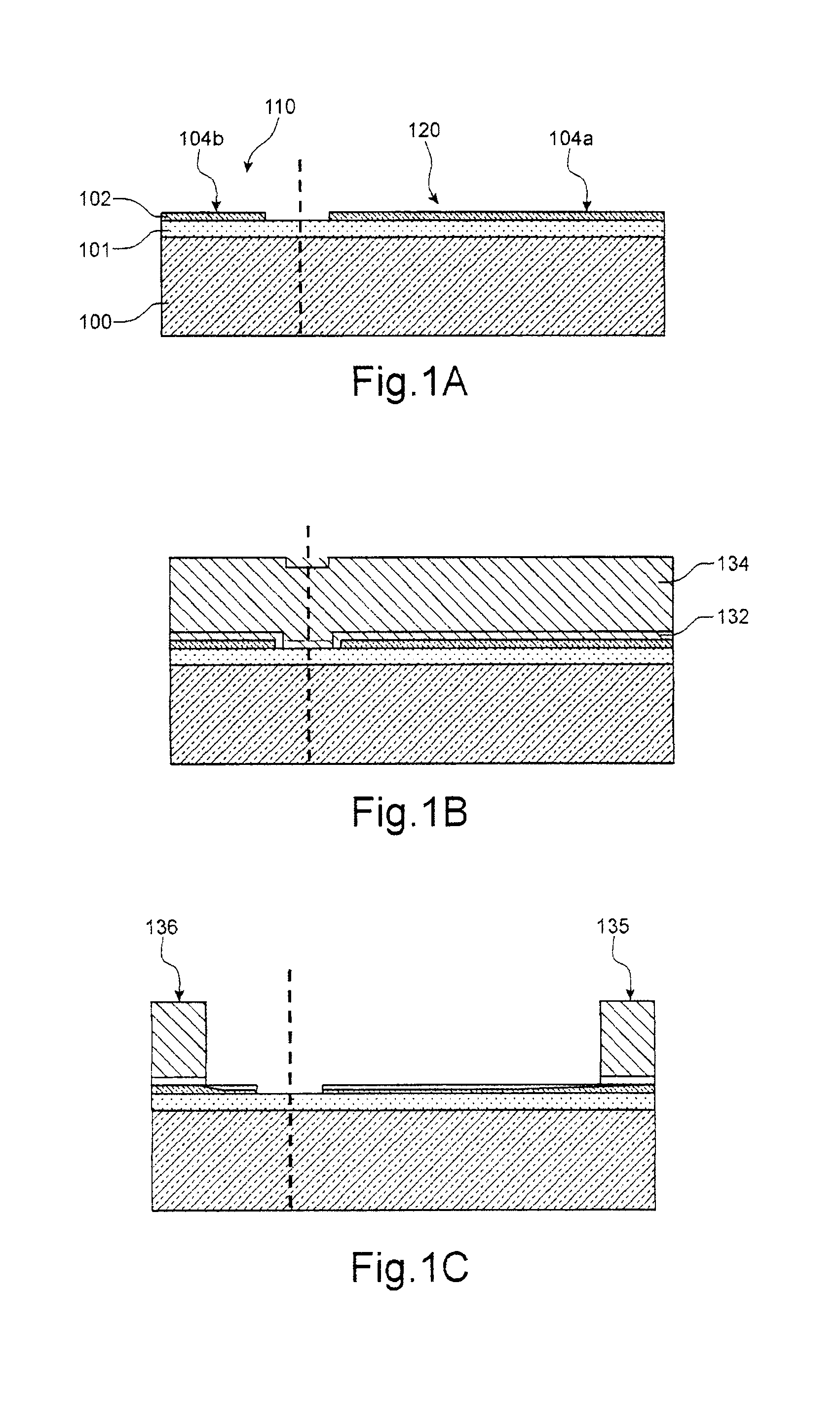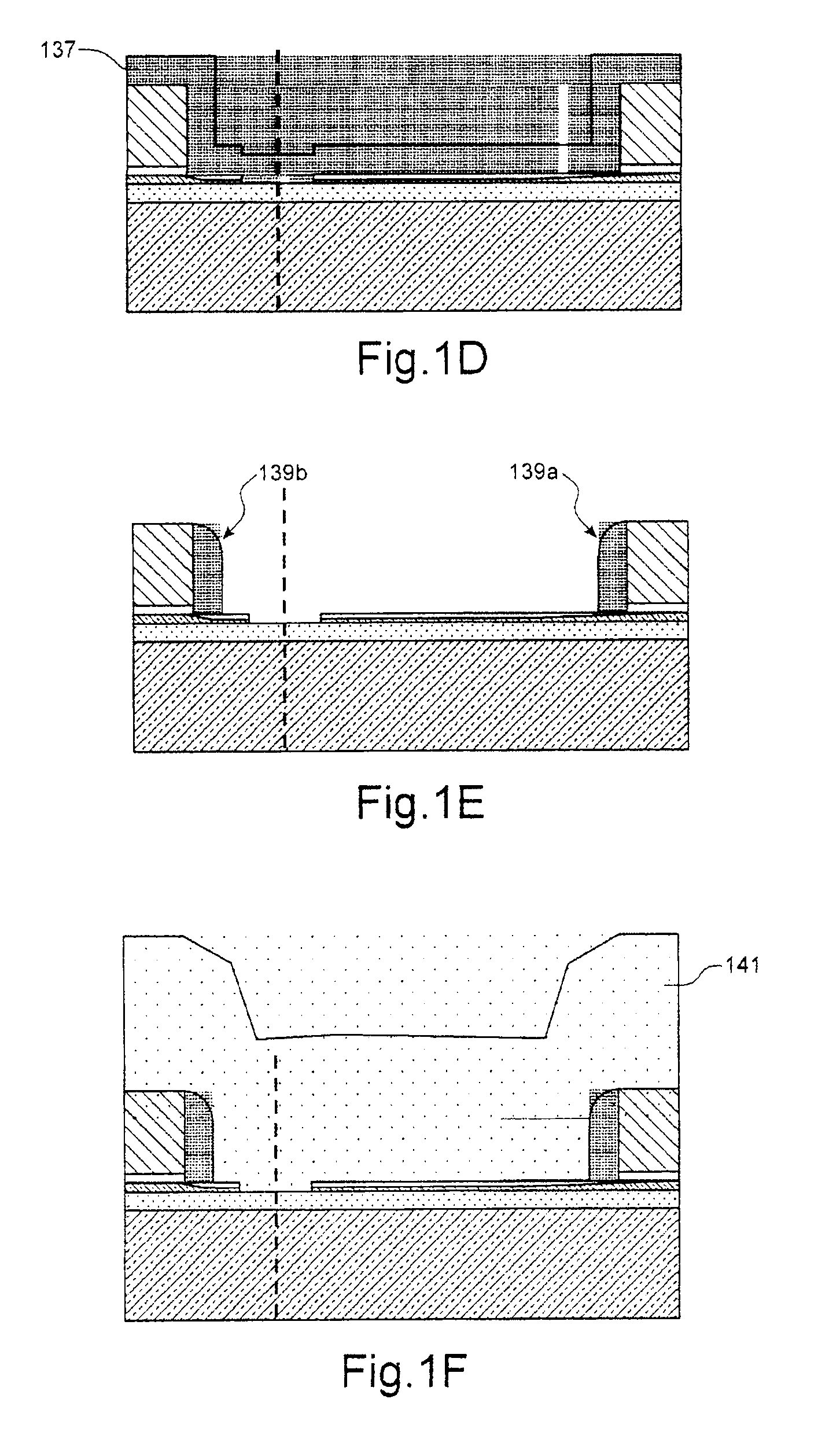Method to fabricate a chip for the detection of biological elements
a technology of biological elements and fabrication methods, applied in the direction of material analysis, measurement devices, instruments by electric/magnetic means, etc., can solve the problems of insufficient detection sensitivity of electric detection devices, inability to precisely distribute channels, and inability to accurately detect the presence of biological elements
- Summary
- Abstract
- Description
- Claims
- Application Information
AI Technical Summary
Benefits of technology
Problems solved by technology
Method used
Image
Examples
Embodiment Construction
[0017]The present invention concerns a method to fabricate a microelectronic device provided with at least one circuit for the detection of biological elements, comprising the steps of:
[0018]a) fabricating, on a substrate, a plurality of transistors each comprising at least one gate formed of at least one layer containing at least one gate material on at least one layer of gate dielectric, said gate resting on a channel region,
[0019]b) removing, at least in part, the respective gate from one or more so-called “first-type transistors” from among said transistors, whilst the respective gate of one or more other so-called “second-type transistors” amongst said transistors, is protected,
[0020]c) binding or grafting biological receptors on a surface (S) of said first-type transistors, the surface facing their channel region.
[0021]The biological receptors, also called biological probes, can for example be in the form of DNA, oligo-nucleotides, proteins, enzymes, or antibodies.
[0022]Bindin...
PUM
 Login to View More
Login to View More Abstract
Description
Claims
Application Information
 Login to View More
Login to View More - R&D
- Intellectual Property
- Life Sciences
- Materials
- Tech Scout
- Unparalleled Data Quality
- Higher Quality Content
- 60% Fewer Hallucinations
Browse by: Latest US Patents, China's latest patents, Technical Efficacy Thesaurus, Application Domain, Technology Topic, Popular Technical Reports.
© 2025 PatSnap. All rights reserved.Legal|Privacy policy|Modern Slavery Act Transparency Statement|Sitemap|About US| Contact US: help@patsnap.com



